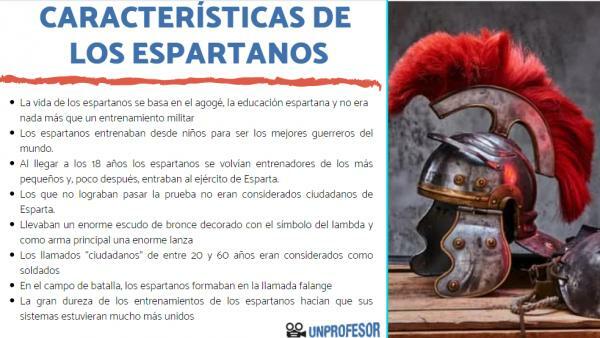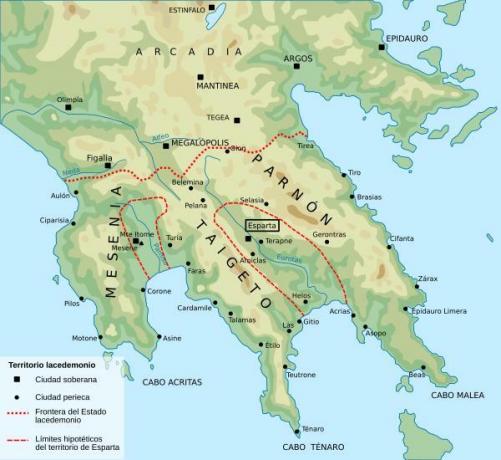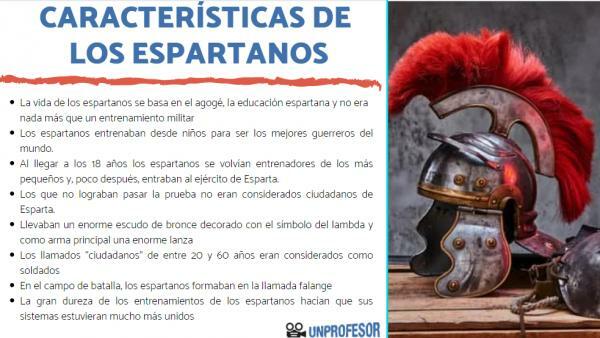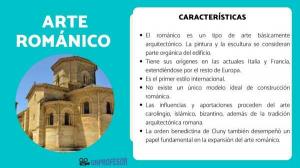Characteristics of the most important SPARTANS

Throughout history there have been a number of Warriors that have exceeded the limits of influence of their time, being remembered for centuries for a series of peculiarities that make them examples of what a warrior should be and serve as a model for millions of people throughout the story. Possibly the most remembered warriors throughout history are the Spartans and, therefore, in this lesson from a Professor we must talk about the characteristics of the Spartans.
Before talking about the main characteristics of the Spartans we must talk about their location, that is, we must summarize and list the characteristics of the important Ancient sparta to understand where these mighty warriors lived in history.
Sparta was a Greek polis located in the Greek area of Laconia, on the Peloponnese Peninsula, born around the 10th century BC C. and disappearing around 146 BC. C. Along with Athens it was the most prominent polis in all of Ancient Greece, being so relevant for its enormous military power and being the protagonists in many of the greatest wars in ancient history.
Sparta was the most special polis, not having walls to protect itself or acropolis and being all its life and existence dedicated to military life. It was this military power that made him stand out so much, clashing with the intellectual and commercial ideals of other polis such as Athens.
Before talking about the characteristics of the Spartans we must list the main elements of their culture, serving to understand many of its main elements. Some of the main characteristics of Ancient Sparta are as follows:
- Although we see them as a polis because of its Greek origin, the reality is that not many of the Hellenists considered it as a real polis.
- Society was based on military status, existing classes and systems focused on this section of his life.
- The Spartan population was divided into citizens and non-citizens, the first being those we consider to be real Spartans.
- Spartan education was called agoge, being only for the so-called Spartans and serving for their military training.
- Sparta was led by two kings, besides by a senate, an assembly and by five magistrates.

To continue with this lesson from a Teacher we must talk about the main characteristics of the Spartans and list the great elements of these incredible warriors and know in depth their habits, life and the reasons why they have passed to the story.
Your training
The life of the Spartans is based on agogé, being known as Spartan education and being nothing more than a training carried out for years so that the Spartans were the best warriors in the world. In most Greek polis education focused on the arts during their early years, not occupying life military their education until they were older, but in the case of Spartans from childhood they were trained to fight.
At a very early age the Spartans were separated from their family to suffer harsh situations and food shortages and water, forcing the children to steal and survive as they could, while making them compete in games and training. As the years went by, his training became tougher and the tasks occupied his entire life for years.
Upon reaching the age of 18 the Spartans became trainers of the little ones and shortly thereafter ethey entered the army of Sparta. Throughout their lives these soldiers were kept in intense training, and those who failed to pass the test were not considered citizens of Sparta.
Equipment of the Spartans
The equipment of the Spartans did not keep a great difference with respect to the typical one of the Greek hoplites. Dresses with tunic, red helmet, long hair as main elements the rest of the Spartan equipment varied over the years, using bronze armor during archaic times, greaves on the legs for much of its existence and its main element being the helmet Corinthian.
As for its armament, the most repeated was the huge bronze shield decorated with the lambda symbol, as the main weapon a huge spear used to attack in groups and as a secondary weapon a xiphos sword characteristic of the Greeks.
Organization of the Spartans
We continue to know the characteristics of the Spartans to discover the organization of this society. In Sparta all so-called citizens between the ages of 20 and 60 were considered to be soldiers, so it could be said that practically the entire polis fought huge wars against any possible enemy of Sparta.
As for his military organization, Soldiers were divided into age groups, with those in their twenties considered weaker little experience in battle and the older ones being called only in case of serious threat or lack of mens.
The organization of the Spartans is difficult to understand in depth due to the enormous differences within their sources, but It appears that most of the troops were phalanx-shaped infantry armed with spears and shields and attacking in group. Other less numerous Spartans were those who rode on horseback, being less common at this time than in later centuries.
The Spartans in action
On the battlefield, the Spartans they formed in the so-called phalanx, not possessing any innovation within the traditional Greek combat system. The great harshness of the Spartans' training made their systems much more united, allowing a cohesion that not many cops were capable of.
It was said that the Spartans only moved by order of the kings and after numerous sacrifices and rituals that would give reason to the need to move in combat. The tradition of the gods for the Spartans was vital, and without it it could happen that months would pass without daring to enter combat.




